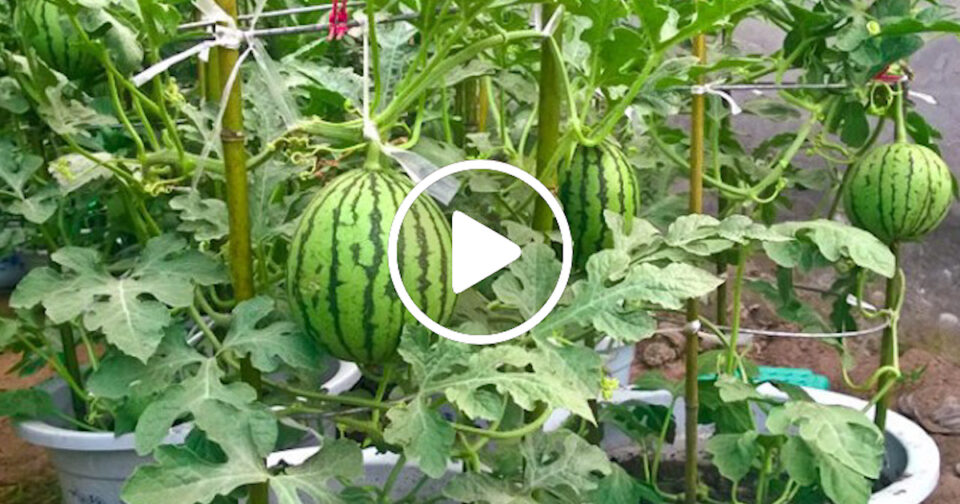Because of their high water content and soft red flesh, watermelons are unquestionably an iconic summer fruit. But did you know that store melons can’t compare to fresh, organically grown melons from your own garden? Watermelon can be grown vertically in a pot to fit into a tiny space, such as a balcony.
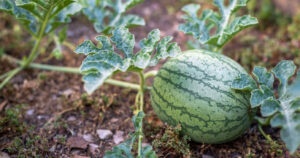
Watermelon has a large taproot that makes it difficult to transplant. That is why sowing the seeds directly in a container is preferable. In the spring, sow 3-4 seeds immediately in a container after the temperature reaches 65 degrees Fahrenheit (19 degrees Celsius).
Winter and early to mid-spring are the best times to sow seeds in warm, non-freezing areas (USDA Zones 10-11). Within 6 to 12 days, the seeds germinate. Remove all but one of the strongest seedlings from each pot.
Watermelon in pots is not difficult to grow, although it can be tough. You must grasp the fundamentals. Because watermelon has a long taproot, a deep pot is required. A huge pot or bucket with a depth of at least 2 feet and a width of at least half a foot is necessary.
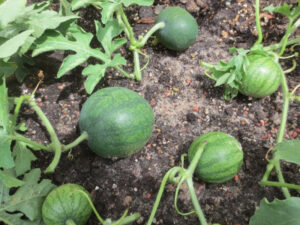
Watermelons should be grown in direct sunlight. Growing watermelon vertically on a trellis is a good option if you’re growing it on a balcony or roof garden with limited room. The trellis must be at least 4 feet tall and strong enough to support the weight of the melons.
Watermelons are warm-weather annuals that may be grown successfully in both tropical and temperate climates.
Watermelons may be grown in temperatures ranging from 50 to 95 degrees Fahrenheit (10-35 C). The ideal growing temperature is between 65 and 85 degrees Fahrenheit (18-30 C).
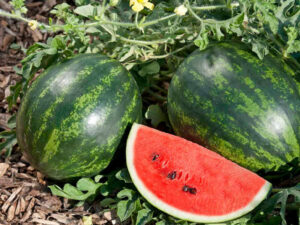
Watermelons can be planted in sandy or loamy soil. The optimal pH for soil is between 6 and 6.8. Clayey, compact soils should be avoided. Plant development is aided by an airy, well-drained substrate.
In addition, applying well-rotted horse, rabbit, or cow manure to the soil enhances the texture and delivers nutrients on a continuous basis.
Because watermelon demands a lot of water, it’s critical to maintain the soil evenly moist–but not wet–at all times, and the water must drain easily from the bottom. Water your watermelon plant every day if you’re growing it in a container, and twice if it’s a hot day.
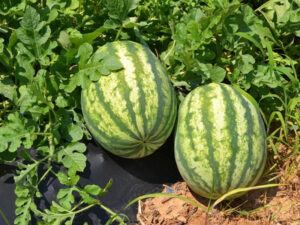
Reduce the watering after the fruits begin to expand and mature. During this time, water slowly and gently. To get the sweetest melons, avoid overwatering and underwatering.
Begin fertilizing the plant with a full-spectrum liquid fertilizer. Use a fertilizer with less nitrogen as the plant begins to flower and appear to set fruit. Consider using a liquid seᴀᴡᴇed fertilizer.
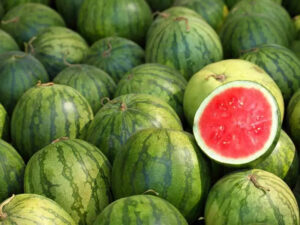
Allow only the main vine to develop to ensure a healthy and fruitful plant. Remove side branches when the plant is young to prevent them from growing more.
Remove any stems that are broken or unhealthy as well. Male and female blooms are produced individually on the watermelon plant.
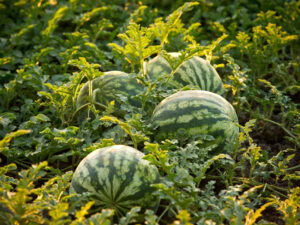
Pollinators (bees and butterflies) will pollinate them, but you’ll need to hand-pollinate the flowers to ensure that you obtain more fruits. The first fruits arrive about 40 days after the blooms have been pollinated.
PLEASE WATCH THE VIDEO BElOW:
